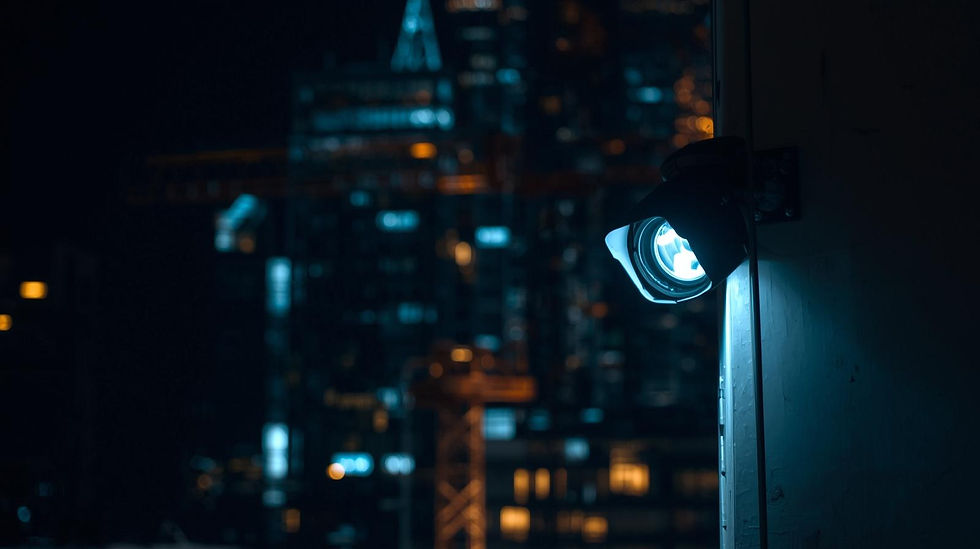Live Surveillance: Myths vs. Facts
- Apex Surveillance

- Jun 9
- 2 min read
In an age where technology is reshaping the way we approach security, live surveillance stands out as one of the most powerful tools in crime prevention and risk management. Yet despite its growing popularity, misconceptions still cloud the reality of what live surveillance can actually do.
Let’s cut through the noise and separate myths from facts to better understand how live surveillance systems function—and why more businesses and property owners are turning to them for reliable, proactive protection.
Myth: Live Surveillance Is Just Like Regular CCTV
Fact:
While traditional CCTV systems record footage for later review, live surveillance actively monitors your property in real-time. This means trained security professionals or AI-driven systems are watching events as they happen—ready to intervene, alert law enforcement, or speak through a two-way speaker if something suspicious occurs. This proactive approach often stops crimes before they escalate.
Myth: It’s Too Expensive for Small Businesses
Fact:
Live surveillance is increasingly scalable and cost-effective. With remote monitoring centers and smart cameras powered by AI, even small businesses can afford real-time protection without hiring full-time security guards. In fact, the cost of live surveillance is often lower than the financial loss from a single break-in or theft.
Myth: Cameras Alone Can’t Stop a Crime
Fact:
Cameras that are part of a live surveillance system can absolutely deter and intervene in crimes in progress. Trained agents or automated systems can issue audio warnings, flash lights, or call emergency services instantly. Studies show visible monitoring systems significantly reduce the likelihood of theft, vandalism, and trespassing.
According to a study by the University of North Carolina, 60% of burglars said they would avoid homes or businesses with visible cameras and security systems.
Myth: AI-Powered Surveillance is Unreliable
Fact:
AI in modern surveillance is far from science fiction. Today’s systems use machine learning to detect unusual behavior, differentiate between people, animals, and objects, and even predict potential threats based on movement patterns. Far from being unreliable, AI actually reduces false alarms and improves response time—especially during off-hours.
Myth: It’s Invasive and Compromises Privacy
Fact:
Live surveillance systems are designed to protect property, not invade privacy. Cameras are strategically placed in public or vulnerable areas like entrances, parking lots, and loading zones. Privacy laws are taken seriously, and footage is often encrypted and access-controlled. In many cases, surveillance can also help resolve disputes fairly through clear video evidence.
Myth: It Only Works at Night or in High-Crime Areas
Fact:
While night surveillance is critical, live monitoring adds value 24/7. It’s useful in preventing internal theft during business hours, monitoring employee safety, and detecting hazards like fires, loitering, or unauthorized access. Whether you’re located in a quiet suburb or a busy urban center, surveillance works as both a deterrent and a safety net.
Conclusion
Live surveillance isn’t a futuristic luxury—it’s a practical, proven method of protecting what matters most. By debunking these myths, it becomes clear that real-time monitoring isn’t just for large corporations or high-risk zones. With advances in AI and remote access, it’s more effective, affordable, and accessible than ever.
If you're still relying solely on outdated CCTV systems or wondering whether real-time surveillance is worth it, the facts speak for themselves: crime doesn’t wait, and your security system shouldn’t either.




Comments